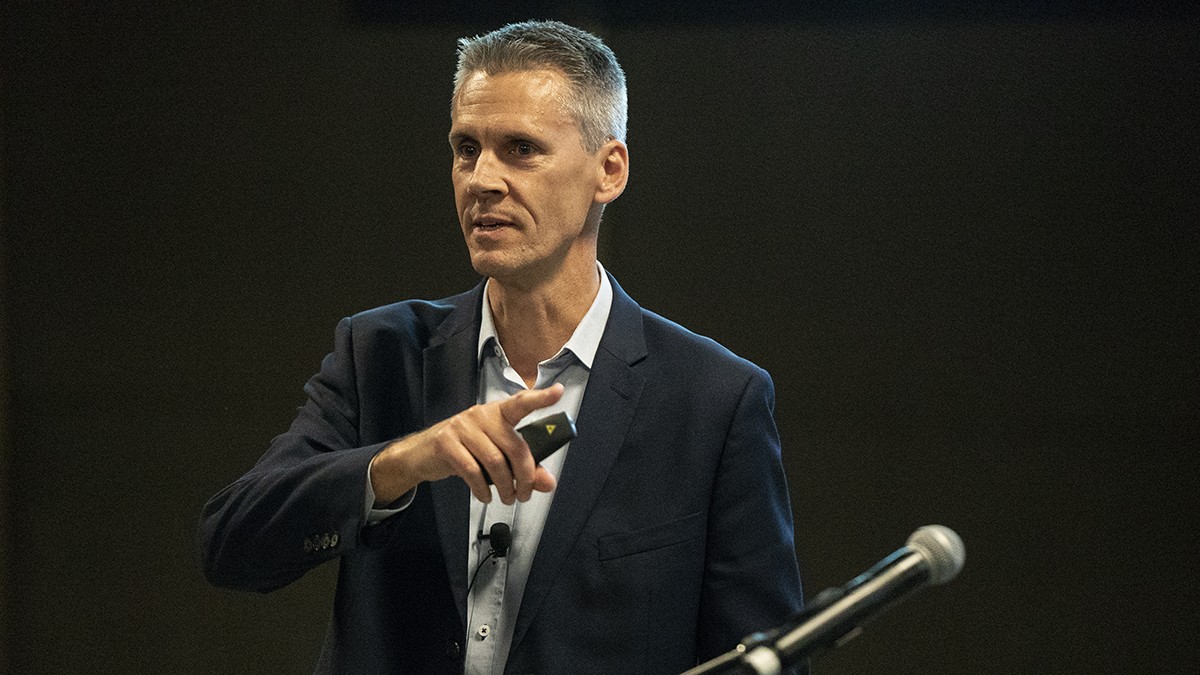
Cracking the brain’s code
As I listen to Professor Jason Mattingley talk about his research on the human brain, my own brain feels like it’s blowing up.
Or to be more accurate: I am experiencing high-frequency neuronal activity.
This increased brain activity is not just because I’m trying to understand Professor Mattingley’s neuroscience research.
It’s because I’m also starting to see the ways this research could benefit people with brain diseases and disorders.
The thing about my frenetic brain activity – and anyone’s for that matter – is that there is so much we don’t know about it. And that’s exactly the neuroscience puzzle that Professor Mattingley wants to piece together.
Together with his colleagues at The University of Queensland, he is working to understand what our brain is doing when we do anything like move, feel or hear.
He wants to crack the brain’s code.
But understanding how the human brain processes information is a difficult problem to solve, because of the complex way our brain cells, called neurons, communicate with each other.
“In a human brain you have virtually an infinite number of possible circuits. You have all these neurons connected to one another, each one a little information-processor ” explained Professor Mattingley at his recent Medical Moonshots lecture at The Australian National University.
“Every single neuron is connected to 100s or even 1,000s of other neurons. So it's a massively parallel system, and a massively flexible system.”

As Professor Mattingley explains to me, our brain cells communicate with each other by sending chemical signals across a small gap between the two cells, called a synapse.
“That's where they're squirting little chemicals to activate the next neuron in the pathway.
“These synapses can also change, making it more or less likely that that pathway will be activated in the future.”
These almost infinite layers of complexity and flexibility are exactly why it is so difficult to crack the brain’s code.
But if we could read the brain’s code by tracking things like electrical activity in real time, then the potential for improving the lives of patients is clear.
Think of a brain tumour for example.
“It’s so much better to catch it early, when it's a tiny ball of cells that you could surgically remove,” Professor Mattingley says.
“But it’s difficult to detect at this stage, and will often progress to take over large parts of the brain before it is picked up. By this stage the person might already have trouble walking or talking, and unfortunately, we cannot reverse the process.”
But what if data on neural activity could inform us when a tumour is starting to grow? Even when it is a microscopic ball of cells?
“If we catch it early, the tumour can be removed and the patient has a significantly higher chance of leading a normal life.”
I think of all the brain cancer patients whose lives could be changed by this research. Then I think about the many brain diseases and disorders that could be impacted similarly: Dementia, Alzheimer’s, epilepsy, Parkinson’s, migraine, stroke, dyslexia.
My neuronal activity is going through the roof.
Advances in neuroscience are resulting in breakthroughs previously never thought possible, including in the fields of artificial intelligence (AI) and brain prosthetics.
But even Professor Mattingley admits that we may never be able to fully crack the brain’s code. With a wry smile he quotes scientist and philosopher Watson Lyall:
“If the brain was so simple that we could understand it, we would be so simple that we couldn’t.”
And with that my mind is blown.
Discover more innovative solutions to the health challenges facing our nation and the world through the Medical Moonshots Dean’s Lecture Series.
